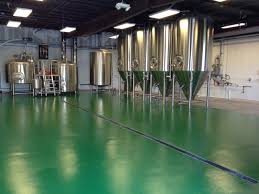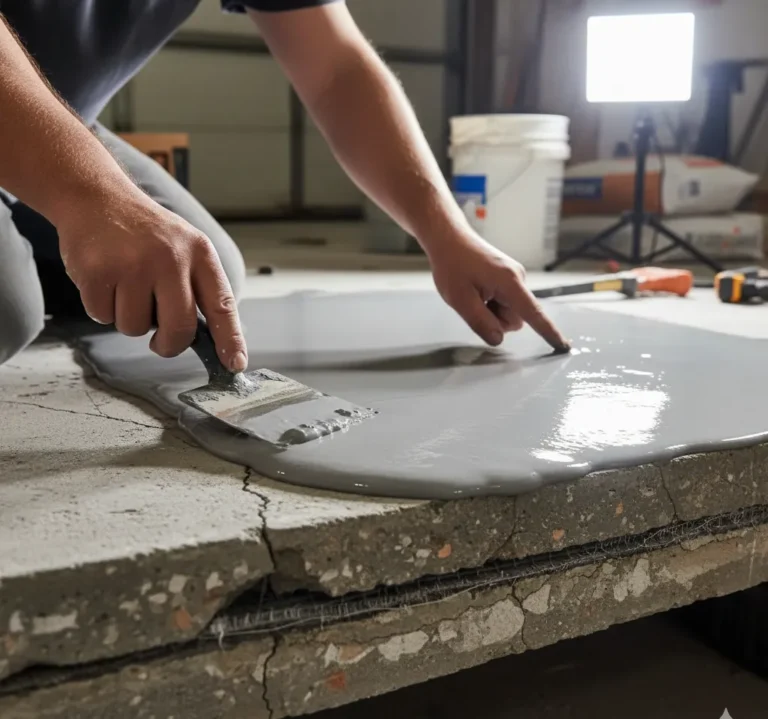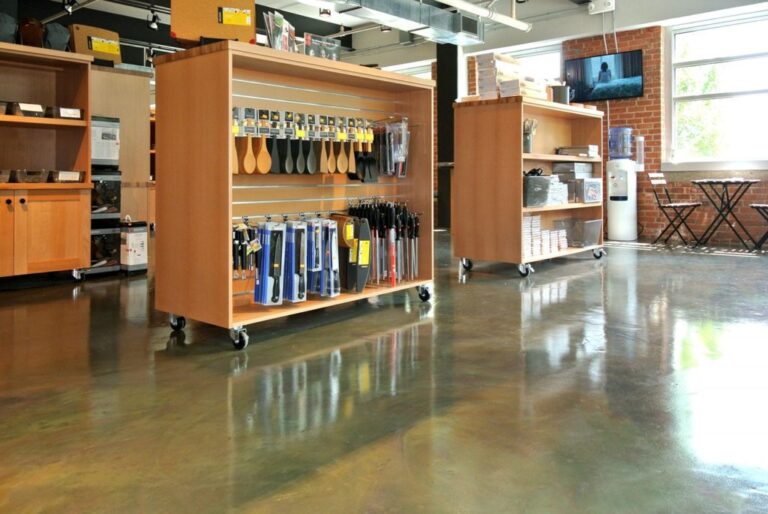Microcement vs Resin Flooring Solutions
Introduction to Flooring Options
Overview of Microcement and Resin Flooring
When it comes to modern flooring solutions, Microcement and Resin are two popular choices that offer unique benefits. Microcement is a cement-based coating that can be applied to various surfaces, providing a seamless and durable finish. Resin flooring, on the other hand, is a synthetic material known for its high resistance and versatility, often used in both residential and commercial settings.
Importance of Choosing the Right Flooring Material
Selecting the right flooring material is crucial for both aesthetic and functional reasons. The right choice can enhance the visual appeal of a space, improve durability, and meet specific needs such as slip resistance or ease of maintenance. Understanding the differences between Microcement and Resin can help you make an informed decision.
Microcement vs Resin: Understanding the Basics
Definition and Composition of Microcement
Microcement is a composite material made from cement, water-based resins, additives, and mineral pigments. It is applied in thin layers, usually between 2-3 mm, and can be used on floors, walls, and even furniture. Its seamless finish makes it a popular choice for modern and minimalist designs.
Definition and Composition of Resin Floors
Resin floors are made from synthetic materials like epoxy, polyurethane, or acrylic. These materials are mixed and poured onto the surface, creating a hard, durable, and often glossy finish. Resin floors are known for their high resistance to chemicals, stains, and wear, making them ideal for industrial and commercial applications.
Characteristics and Benefits of Microcement
Durability and Aesthetics of Microcement
Microcement is highly durable and resistant to cracking, making it suitable for high-traffic areas. Its seamless finish provides a sleek and modern look, which can be customized with various colors and textures.
- High resistance to wear and tear
- Seamless and customizable finish
- Suitable for high-traffic areas
Practical Applications of Microcement in Modern Design
Microcement is versatile and can be used in various settings, from residential homes to commercial spaces. It is often used in bathrooms, kitchens, and living areas due to its water-resistant properties.
- Ideal for bathrooms and kitchens
- Can be applied to floors, walls, and furniture
- Water-resistant and easy to clean
Advantages of Resin Floors
Superior Resistance and Versatility of Resin Flooring
Resin floors are known for their superior resistance to chemicals, stains, and impact. This makes them ideal for industrial settings, garages, and commercial spaces where durability is a priority.
- High resistance to chemicals and stains
- Suitable for industrial and commercial use
- Impact-resistant and durable
The Aesthetic Appeal of Epoxy Resin Floors
Epoxy resin floors offer a high-gloss finish that can be customized with various colors, patterns, and even 3D effects. This makes them a popular choice for modern and artistic interior designs.
- High-gloss and customizable finish
- Available in various colors and patterns
- Can create 3D effects for unique designs
Comparing Installation Processes
Microcement Application Techniques
The application of Microcement involves several steps, including surface preparation, priming, applying multiple layers of Microcement, and sealing. Each layer must be allowed to dry before the next is applied, making the process time-consuming but essential for a durable finish.
- Surface preparation and priming
- Multiple layers of Microcement application
- Sealing for durability
Resin Flooring Installation Requirements
Installing resin flooring involves mixing the resin components, pouring the mixture onto the surface, and allowing it to cure. The process is generally quicker than Microcement application but requires precise mixing and application to ensure a smooth finish.
- Mixing resin components
- Pouring and spreading the mixture
- Curing for a smooth finish
Performance and Maintenance
Longevity and Care for Microcement Surfaces
Microcement surfaces are long-lasting and require minimal maintenance. Regular cleaning with mild detergents and occasional resealing can keep the surface looking new for years.
- Long-lasting and durable
- Minimal maintenance required
- Regular cleaning and occasional resealing
Maintenance Tips for Resin Floors
Resin floors are easy to maintain and clean. Regular sweeping and mopping with mild cleaners can keep the surface in good condition. However, it’s essential to avoid abrasive cleaners that can damage the finish.
- Easy to clean and maintain
- Regular sweeping and mopping
- Avoid abrasive cleaners
Microcement vs Resin: Aesthetic Outcomes
Visual Impact of Microcement Finishes
Microcement offers a seamless and matte finish that can be customized with various textures and colors. Its minimalist look makes it a popular choice for modern and contemporary designs.
- Seamless and matte finish
- Customizable textures and colors
- Ideal for modern designs
Creative Possibilities with Resin Flooring
Resin flooring offers endless creative possibilities, from high-gloss finishes to 3D effects. It can be customized with various colors, patterns, and even embedded objects, making it a versatile choice for artistic designs.
- High-gloss and 3D effects
- Customizable colors and patterns
- Versatile for artistic designs
Technical Aspects of Microcement and Resin
Water-Based vs Resin-Based Microcement
Water-based Microcement is eco-friendly and emits fewer VOCs, making it a safer choice for indoor applications. Resin-based Microcement, on the other hand, offers higher durability and resistance but may emit more VOCs.
|
Feature |
Water-Based Microcement |
Resin-Based Microcement |
|
Eco-friendliness |
High |
Moderate |
|
VOC Emissions |
Low |
High |
|
Durability |
Moderate |
High |
Epoxy Microcement Features and Types
Epoxy Microcement combines the benefits of both epoxy and Microcement, offering a durable and seamless finish. It is available in various types, including self-leveling and decorative options.
- Combines epoxy and Microcement benefits
- Durable and seamless finish
- Available in self-leveling and decorative types
Microcement vs Resin: Safety and Comfort
Non-Slip Properties and Comfort Underfoot
Both Microcement and Resin floors can be made non-slip by adding aggregates or textured finishes. This makes them safe for use in areas prone to moisture, such as bathrooms and kitchens.
- Non-slip options available
- Safe for wet areas
- Comfortable underfoot
Health and Environmental Considerations
Water-based Microcement is more eco-friendly and emits fewer VOCs, making it a healthier choice for indoor environments. Resin floors, especially those made from epoxy, may emit more VOCs but offer higher durability. Microcement flooring durability concerns Microcement floors can crack or chip if heavy objects are dropped on them and they may need regular sealing to prevent stains and water damage over time Microcement flooring aesthetics
Durable museum surfaces are special materials used in museums that can withstand lots of touching and cleaning without getting damaged These surfaces help protect exhibits and make sure they stay in good condition for a long time Microcement showcases elevate boutique displays by adding a sleek and modern look to store shelves and counters The smooth finish of microcement helps products stand out and catch customers’ eyes
Contemporary museum coatings are special protective layers applied to artwork and artifacts in museums These coatings help preserve and protect valuable items from damage caused by light humidity and other environmental factors Sleek microcement surfaces are smooth and modern-looking floors or walls They are made by applying thin layers of a special cement mixture to create a seamless and stylish finish
Contemporary microcement kitchen offers a sleek and modern look with smooth surfaces that are easy to clean and maintain
- Water-based Microcement is eco-friendly
- Resin floors may emit more VOCs
- Consider health and environmental impact
Cost Analysis: Microcement vs Resin
Budgeting for Microcement Flooring
Microcement flooring can be more expensive due to the labor-intensive application process. However, its durability and low maintenance can make it a cost-effective choice in the long run.
- Higher initial cost
- Labor-intensive application
- Cost-effective in the long run
Understanding the Pricing of Resin Floors
Resin floors can vary in cost depending on the type of resin used and the complexity of the design. Epoxy resin floors are generally more affordable but may require more maintenance over time.
- Varies by resin type and design complexity
- Epoxy resin is generally more affordable
- May require more maintenance
FAQs: Microcement vs Resin
Can Microcement and Resin Be Used Outdoors?
Yes, both Microcement and Resin can be used outdoors. Microcement is often used for patios and pool decks, while Resin is suitable for driveways and outdoor industrial areas.
Is It Necessary to Seal Microcement and Resin Floors?
Sealing is essential for both Microcement and Resin floors to protect them from stains, moisture, and wear. Regular resealing can extend the lifespan of the flooring.
How to Choose Between Microcement and Resin for Different Applications?
Choosing between Microcement and Resin depends on the specific needs of the space. Microcement is ideal for seamless, minimalist designs, while Resin is better for high-resistance and creative applications.
Can Microcement or Resin Be Applied Over Existing Floors?
Yes, both Microcement and Resin can be applied over existing floors, provided the surface is properly prepared. This makes them versatile options for renovations.
What Are the Color Options for Microcement and Resin Floors?
Both Microcement and Resin floors offer a wide range of color options. Microcement can be tinted with mineral pigments, while Resin can be customized with various colors and patterns.





